Showy evening primrose, or Oenothera speciosa, is also known as pink evening primrose, pinkladies, or Mexican evening primrose. Growing Showy Evening Primrose from seed is an inexpensive way to add cottage-garden charm to your landscape using native flowers.
This captivating wildflower is native to North America, particularly the central and southern regions, where it thrives in various habitats such as prairies, meadows, and open woodlands.
Showy evening primrose is a perennial plant, meaning it returns year after year. It is well-suited for USDA hardiness zones 4 to 10, where it can withstand a range of climates and soil conditions. In colder zones, it may behave as a short-lived perennial or self-seed to persist in the garden.
Showy evening primrose (Oenothera speciosa) is named for its stunning display of pink or white blossoms that open during the day and remain open into the evening. These flowers attract pollinators like moths and bees and typically bloom from late spring to early summer, adding a touch of elegance to gardens and natural landscapes.

When to Start Growing Showy Evening Primrose from Seed
Showy evening primrose seeds can be started indoors or sown directly outdoors, depending on your USDA hardiness zone and local climate conditions. Here’s a guide on when to start showy evening primrose seeds based on different zones:
In zones 3-5
Start showy evening primrose seeds indoors in late winter or early spring, around 6-8 weeks before the last frost date. Alternatively, you can sow the seeds directly outdoors in early spring after the danger of frost has passed.
In zones 6-8
You can start showy evening primrose seeds indoors in early spring, about 4-6 weeks before the last frost date. Outdoor sowing can also be done in early spring once the soil has warmed up.
In zones 9-12
Showy evening primrose seeds can be started indoors in late winter or early spring, similar to zones 3-5, or sown directly outdoors in early spring or fall when temperatures are cooler.
Adjust the timing slightly based on your local climate and growing conditions to ensure the best results when growing showy evening primrose from seed.
Direct Sowing Showy Evening Primrose
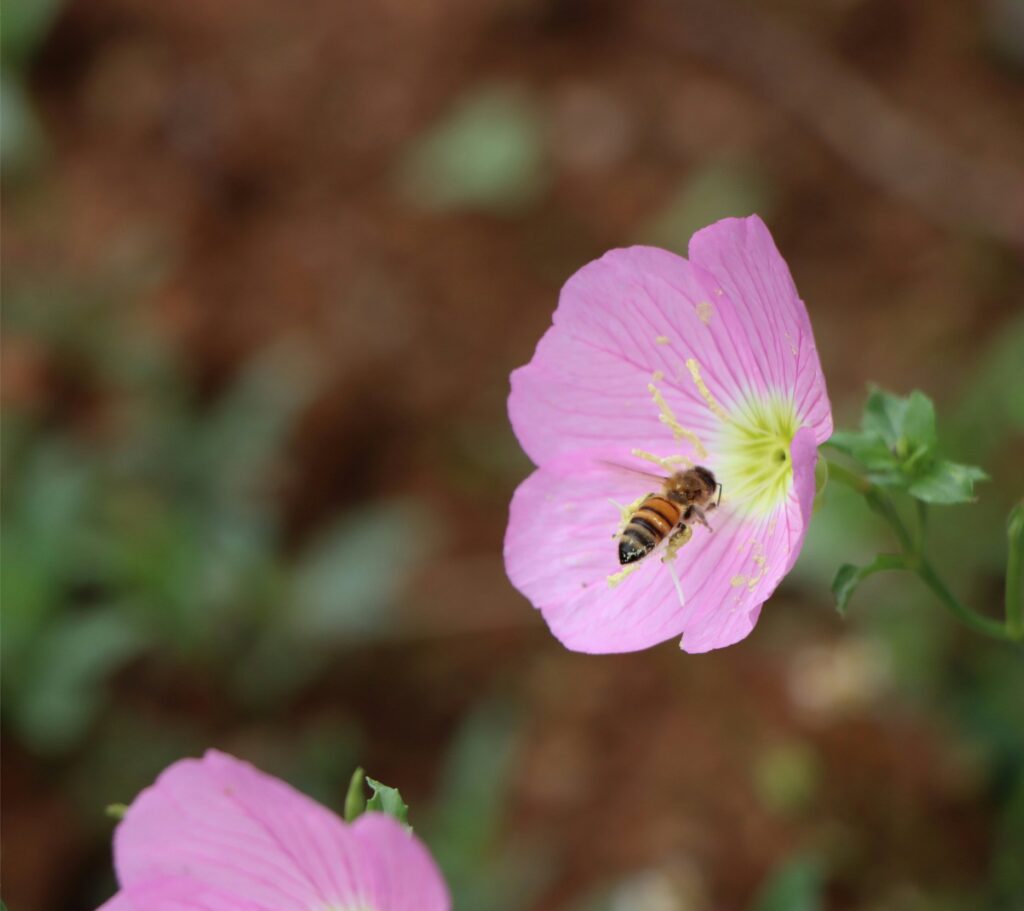
When starting showy evening primrose seeds by direct sowing in the garden, keep the following in mind:
Showy evening primrose seeds germinate best in soil temperatures ranging from 60°F to 70°F. Provide a warm and sunny location for optimal germination.
Showy evening primrose seeds should be surface-sown with only a sprinkling of soil to keep them in place. Loosen the soil in the planting area to ensure good seed-to-soil contact and then pat them in place.
Keep the soil consistently moist but not waterlogged until the seeds germinate. Water the planting area gently to avoid displacing the seeds or compacting the soil.
Showy evening primrose seeds benefit from exposure to sunlight for germination. Ensure that the planting area receives at least partial sunlight during the day.
Showy evening primrose seeds typically germinate within 15 to 30 days under favorable conditions. Keep monitoring the planting area for signs of seedlings emerging from the soil.
How to Start Showy Evening Primrose Indoors
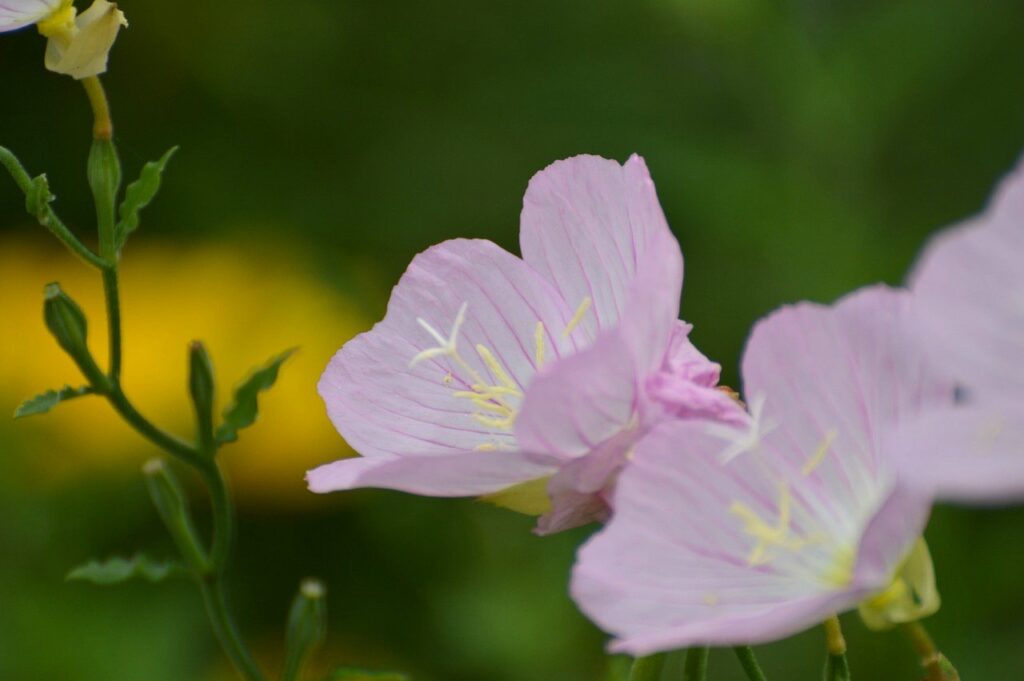
Prepare a well-draining seed starting mix suitable for showy evening primrose seeds. You can create a mix by combining equal parts of coconut coir, perlite, and vermiculite. Alternatively, use a pre-made seed starting mix available at garden centers.
Select cell trays or soil blocks that provide adequate space for seedling growth. Choose containers with drainage holes to prevent waterlogging. Each cell or block should be at least 2 inches deep.
Plant showy evening primrose seeds on top of the potting mix and gently press the seeds into the soil mix for good seed-to-soil contact.
Keep the seed starting mix consistently moist but not waterlogged. Use a spray bottle or water from the bottom to prevent seed displacement.
Showy evening primrose seeds germinate best in temperatures ranging from 60°F to 70°F. Place seed trays in a warm and well-lit location, such as near a sunny window or under grow lights.
Showy evening primrose seeds typically germinate within 15 to 30 days under optimal conditions. Keep the soil moist and continue to provide adequate light and warmth for successful germination.
When to Transplant Showy Evening Primrose
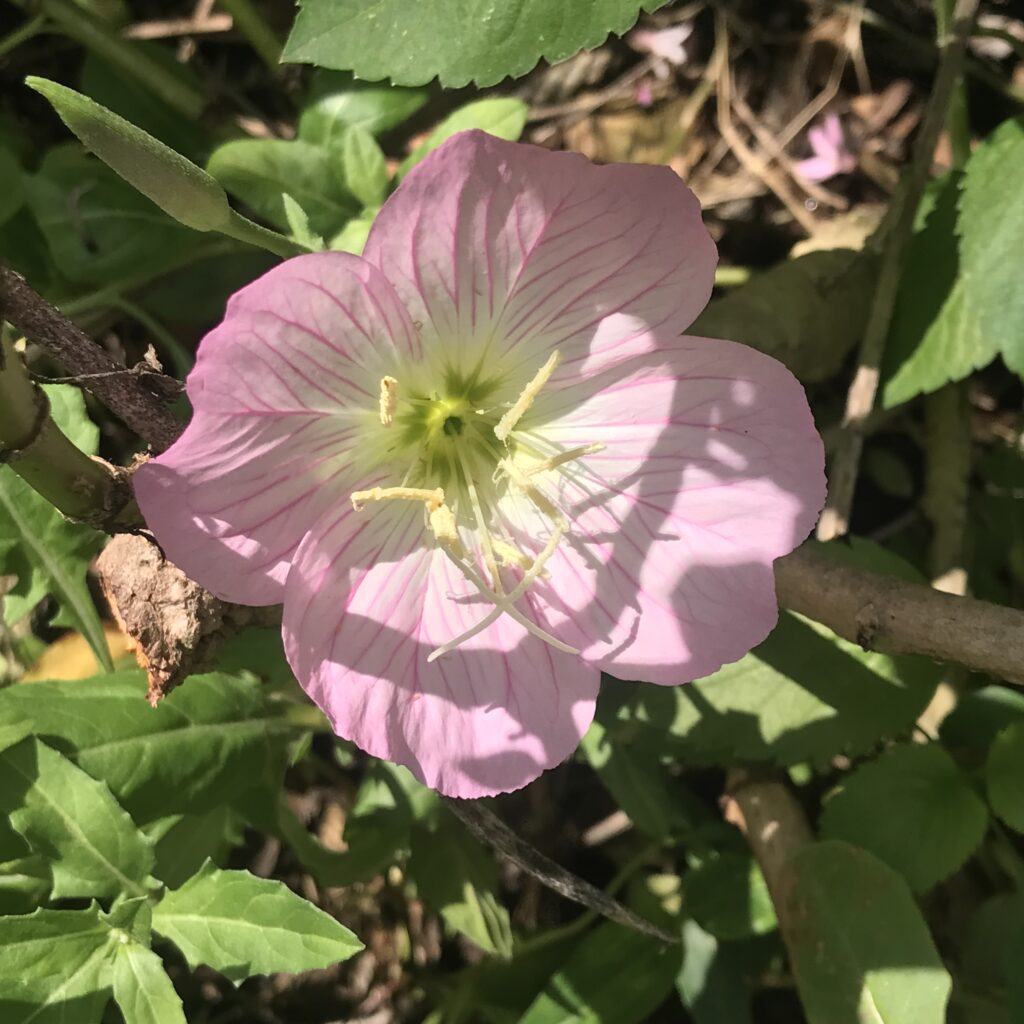
Monitor the growth of your showy evening primrose seedlings in cell trays or soil blocks. Once they have developed multiple sets of true leaves and reached a height of 2 to 3 inches, they are generally ready for transplanting into the garden.
Check the root system of the seedlings by gently lifting them from the containers. Look for well-developed roots that fill the container without being overly crowded or root-bound. Healthy roots indicate that the seedlings are ready for planting.
Consider the outdoor weather conditions and the frost dates in your area. Ensure that the soil temperature has warmed up sufficiently and that the risk of frost has passed before transplanting the seedlings into the garden.
Hardening-Off Before Transplant
Before planting the seedlings outdoors, gradually acclimate them to outdoor conditions through a process called hardening off. Place the seedlings outdoors in a sheltered location for a few hours each day, gradually increasing the exposure to sunlight and outdoor elements over a week or two.
Once your showy evening primrose seedlings have adjusted to outdoor conditions and are sturdy with well-developed roots, they are ready for transplanting into the garden.
Preparing Your Garden Bed for Showy Evening Primrose
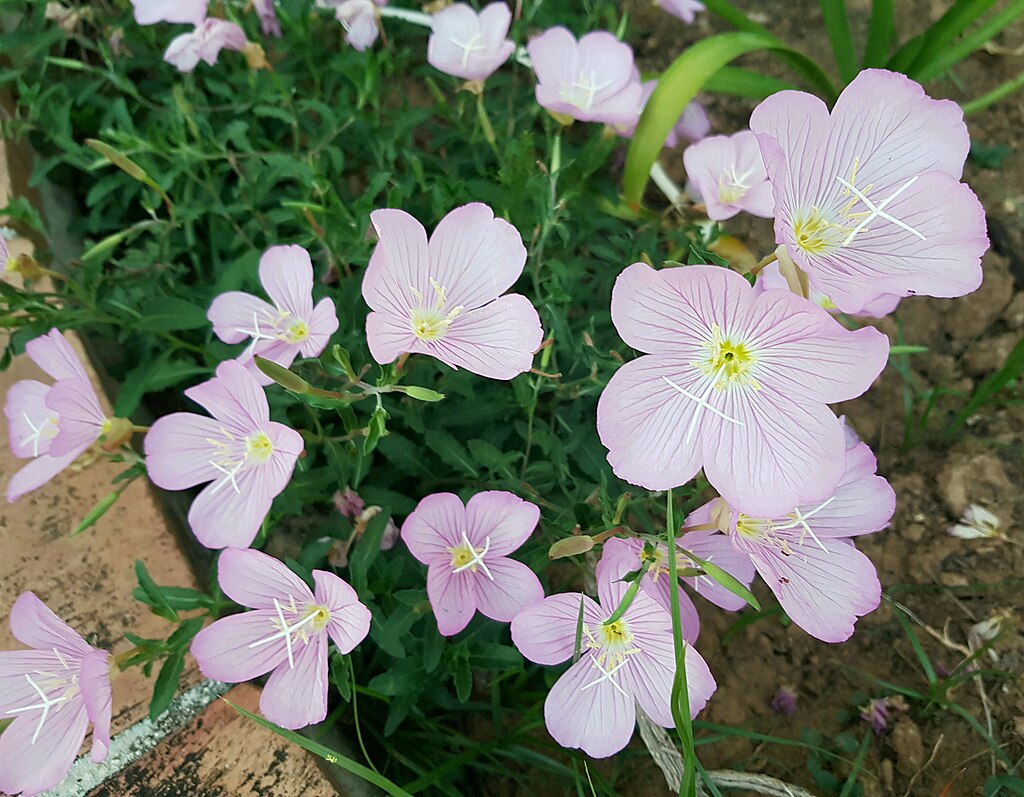
Preparing the garden bed for showy evening primrose plants involves several key steps to ensure optimal growth and blooming.
Select a sunny to partially shaded location for planting showy evening primrose. The site should receive at least 6 hours of sunlight per day. Ensure the area has well-draining soil and sufficient space for the plants to spread.
While showy evening primrose is drought-tolerant once established, it benefits from regular watering during dry periods, especially in hot climates. Ensure the garden bed has access to irrigation or a watering schedule to maintain adequate moisture levels.
Showy evening primrose prefers well-draining soil with a slightly acidic to neutral pH (around 6.0 to 7.0). Amend heavy clay soils with organic matter such as compost or well-rotted manure to improve drainage and soil structure. Perform a soil test to determine the pH level and adjust as needed.
Planting Showy Evening Primrose into the Garden
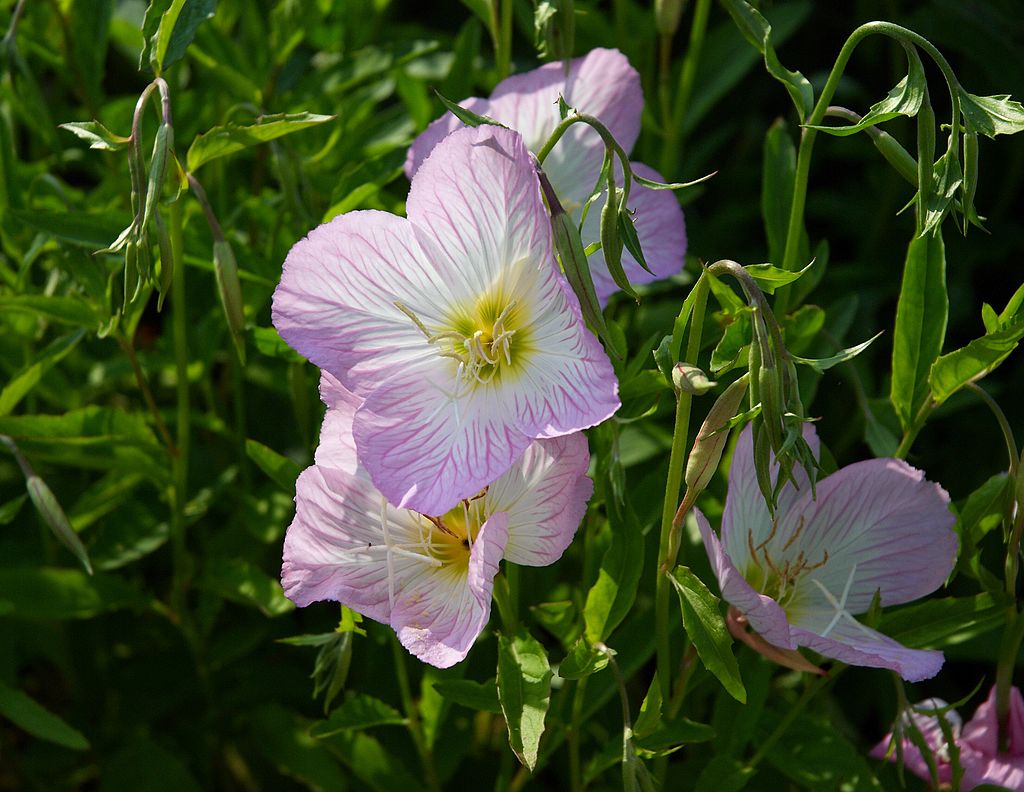
Dig planting holes for showy evening primrose that are slightly wider and deeper than the root ball of the seedling. Place the plants in the holes at the same depth as they were in the containers.
Space the plants about 12 to 18 inches apart to allow for their spreading growth habit.
Apply a layer of organic mulch, such as shredded bark or compost, around the base of the plants. Mulching helps retain soil moisture, suppress weeds, and regulate soil temperature.
Keep the mulch a few inches away from the stems to prevent moisture-related diseases.
Water newly planted showy evening primrose thoroughly to settle the soil around the roots. Provide regular watering during the first few weeks after planting to help the plants establish.
Caring for Showy Evening Primrose Plants
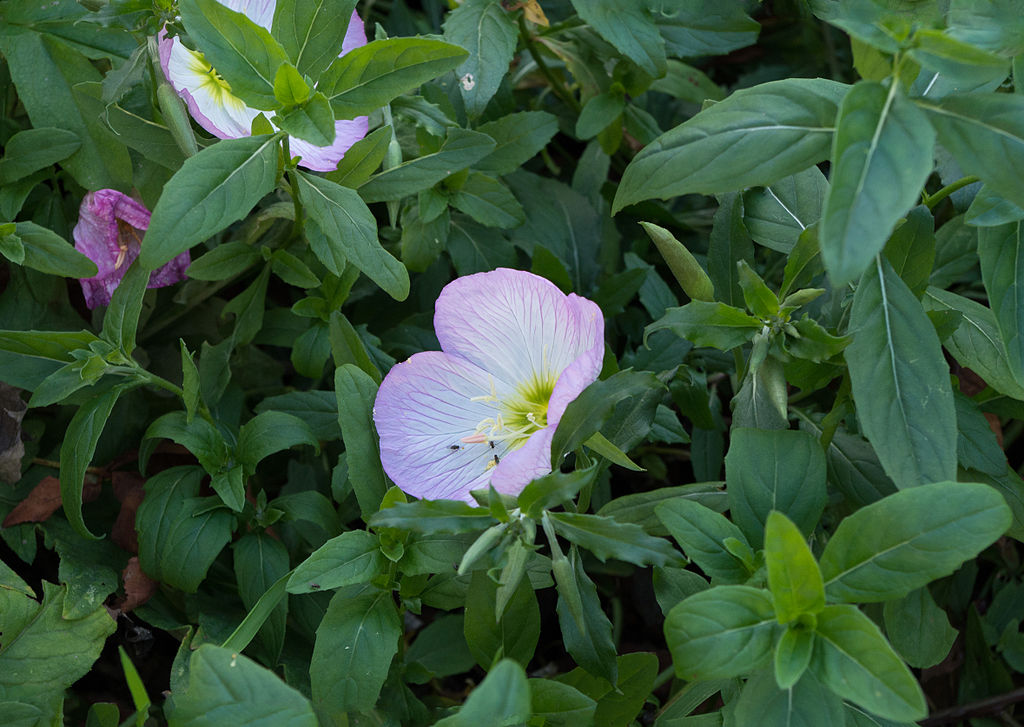
Showy evening primrose plants prefer moderate moisture levels. Once established, water deeply but infrequently, allowing the soil to dry out slightly between waterings. Avoid overwatering, as this can lead to root rot and other moisture-related issues.
Fertilize showy evening primrose plants sparingly, using a balanced fertilizer formulated for flowering plants. Apply fertilizer in early spring and again in mid-summer according to package instructions. Avoid excessive fertilization, as it can lead to lush foliage at the expense of blooms.
Keep the area around showy evening primrose plants free of weeds. Regularly remove any weeds that compete for nutrients, water, and sunlight. Mulching can also help suppress weed growth and reduce the need for frequent weeding.
Benefits of Growing Showy Evening Primrose
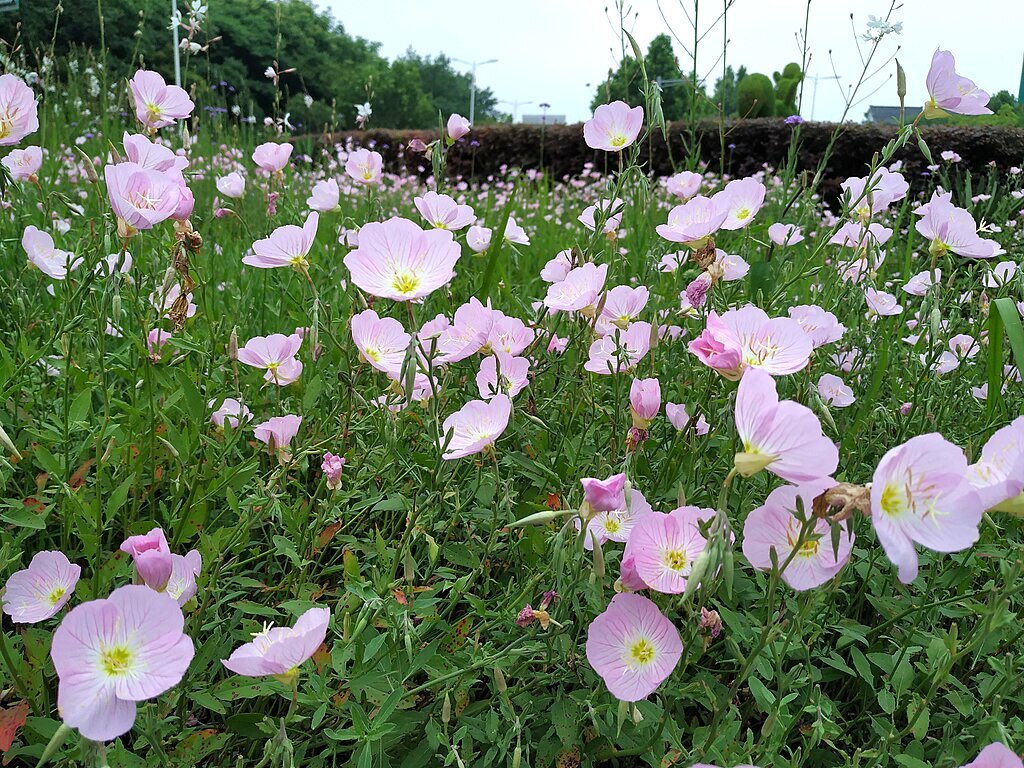
Showy evening primrose (Oenothera speciosa) offers numerous benefits for gardeners. Its cup-shaped pink blossoms create a charming and elegant display in gardens and natural landscapes, attracting pollinators like bees and moths.
As a native wildflower, it is well-adapted to various soil types and climates, making it a versatile and low-maintenance addition to garden beds, borders, and rock gardens.
Overall, cultivating showy evening primrose adds beauty, biodiversity, and ecological value to outdoor spaces.
